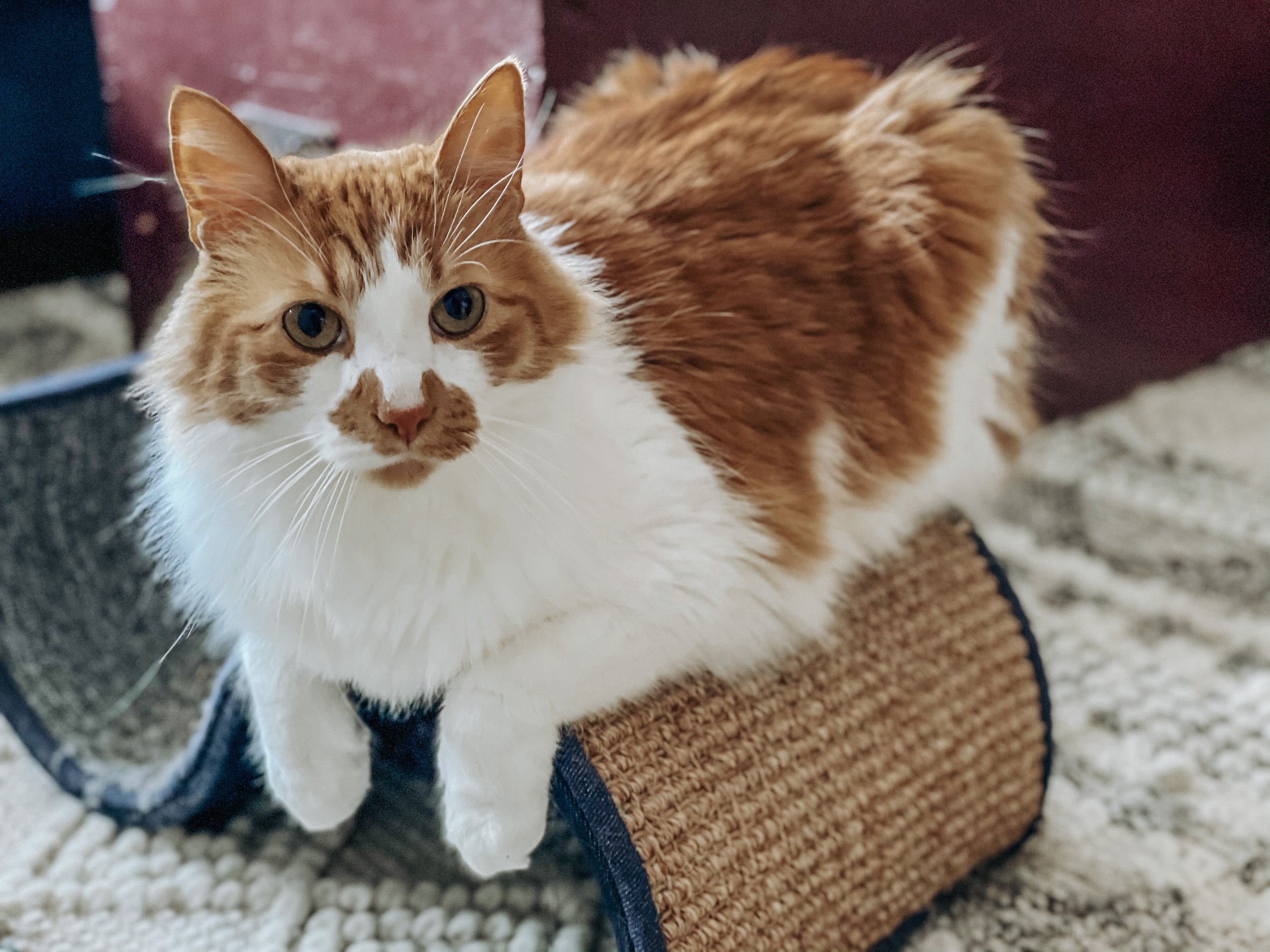Preparing For Your Cat Sitter
Picture this –
It’s February in Minnesota. The snow is piled up outside and the temp is hovering around zero. It only makes sense to book a trip to a warm and tropical place. Few things are more exciting than the prospect of a tropical vacation over spring break, but you can’t bring your cat to the Bahamas…so what do you need to do so you can enjoy a stress-free trip while your cat stays safe at home?
Here are four things you can do to prepare to leave your cat at home while you travel.
Find a Petsitter
The first thing you want to do is find a trustworthy pet sitter. Independent cats can be left overnight or even a day to fend for themselves, but any longer than that and you definitely need someone to check on them. It depends on the personality of your cat when it comes to how much time they can spend alone, but it is a good idea to find someone to visit once or even twice a day while you are gone. Kittens can get into a lot of trouble if they are bored! Some cats will simply lay around and sleep, but others may find “fun” things to do around the house. Cats can fit themselves into the tiniest spaces and get stuck. They can wrap themselves up in cords or curtain strings. They can escape quickly past the feet of a worker. All kinds of events can occur if you have a curious cat.
A family member or trusted neighbor can be a good option as a pet sitter, but I will always recommend finding an experienced, insured professional. We have the experience to foresee problems and know how to respond if there is an emergency.
You can find a bonded and insured professional pet sitter in Minnesota at https://petsittersmn.org
Or outside of Minnesota you can use the Pet Sitters International search feature. https://www.petsit.com/locate
Prepare Care Information
After you find a sitter that is available for your travel dates, the next thing you should do is write down the instructions for your sitter. There can be a lot to consider such as food, water, litter, playtime, other housesitting tasks that may need to be done and an emergency care plan.
We make it really easy here at Twin Cities Pets by having an online profile that asks a series of questions that covers all of your pets needs. Your sitter will access all of your pet’s care information through your profile.
I have also put together a checklist that can be downloaded here to help you remember everything that will need to be done to care for your cat.
It covers such things as,
How much food does your cat eat each day?
How many times a day are they fed?
When are they fed each day?
Where is the food bowl located?
Where is the food stored?
Where is the water bowl or fountain located?
Do they drink tap water or filtered water?
Where are litter boxes located?
How often should they be cleaned?
Is there additional litter stored somewhere?
Where should the dirty litter be disposed of?
What does your cat enjoy doing? Do they like to play with toys or would they rather snuggle in your lap? Maybe they are annoyed that there is a stranger in their house and they’ll be hiding the entire time.
Does your cat have any health concerns we should be aware of?
Does your cat eat plastic (or mail or plants) or anything else that could harm them?
Will your cat need medication?
How is the medication administered?
When is the medication administered?
Who is their primary Veterinarian?
Should the mail be picked up or are you putting a hold on mail and newspapers?
Are there plants that need to be watered?
Writing down all of the different aspects of your cat’s care gives you an opportunity to reflect on what your cat’s day looks like so you can communicate it clearly to your pet sitter. That way your cat’s day to day routine is interrupted as little as possible.
Organize Supplies
A few days before you leave it is a good idea to gather up all of your cat’s supplies. Make sure to include anything the caregiver may need to use while you are away. The kitchen counter is a great place to keep the supplies. You could also keep the supplies in a locked closet or a secure plastic storage container if your cat cannot be trusted around unsecured food.
The supplies you should have available are:
Dry and/or wet cat food.
Treats or catnip
Extra food and water bowls
Cat carrier
Favorite toys
Unused gravity feeder or timed feeder.
Cleaning products in case your cat has a hairball while you’re away. (It’s a good idea to use cleaning products that you have tested before hand on your carpet or upholstery. Usually rags or paper towels and water are enough to clean up most messes.)
Extra bags for scooping the litter box if you do not have a litter genie. (Keep the litter scoop out in view by the litter box.)
Any medication your cat might need and the treats or syringes that are used to administer the medication.
Emergency contact numbers
It is a good idea to do a quick sweep of your home and put away anything potentially poisonous or dangerous to your pet.
Having all of the supplies together will make it easy for your pet sitter to find them. It also gives you an opportunity to see if you have enough food, litter and medication for the time you will be away so you can order more if needed.
Consider Emergencies
Finally, it is a good idea to brainstorm any emergency situations that could occur and create a plan to address them.
If your cat were to become ill or hurt themselves, we would head to their regular vet for treatment. It is important to make sure your sitter knows the name and contact information of your cat’s primary veterinarian. Also include the contact information for the closest 24 hour emergency vet if you have it.
You should have an emergency contact we can call if we can not get ahold of you. They should live in the same area as you (not another city or state). They should keep a copy of your house key so they can access your home if needed. You should also discuss what care you would like your cat to receive if they were to become ill. They would be the person who would make the care decisions if you are not reachable, so it’s incredibly important that they understand what care you would want for your cat in case of an emergency illness.
Natural disasters are another emergency to consider. Here in Minnesota, we get hit with snow storms that can dump over a foot of snow overnight. It takes time to dig out and sometimes conditions are so bad we cannot travel right away. If you are traveling in the winter, it is a good idea to leave a key with a trusted neighbor who could walk to your house and care for your cats if there is a huge storm. We make every effort to get there, but sometimes it just isn’t possible.
A timed auto feeder or gravity feeder would also be helpful in case of a snowstorm or any natural disaster that could prevent travel. We can set a timed feeder the day before a big storm so your cat gets their regular food and stays on their regular routine, even if we cannot stop by for a day. Don’t forget to make sure the auto feeder has fully charged back up batteries in case the electricity goes out from the storm.
If there will be subzero temperatures while you are away, consider leaving a faucet dripping to prevent pipes from freezing. It is incredibly stressful when things happen to your home when you are away and no one wants to come home to a flooded house from broken pipes. Luckily, you have a pet sitter visiting so they can catch those emergencies when they happen and help prevent them from becoming bigger emergencies.
It can be hard to leave your beloved cat at home when you travel but following our checklists and preparing ahead will make travel easier for you and

